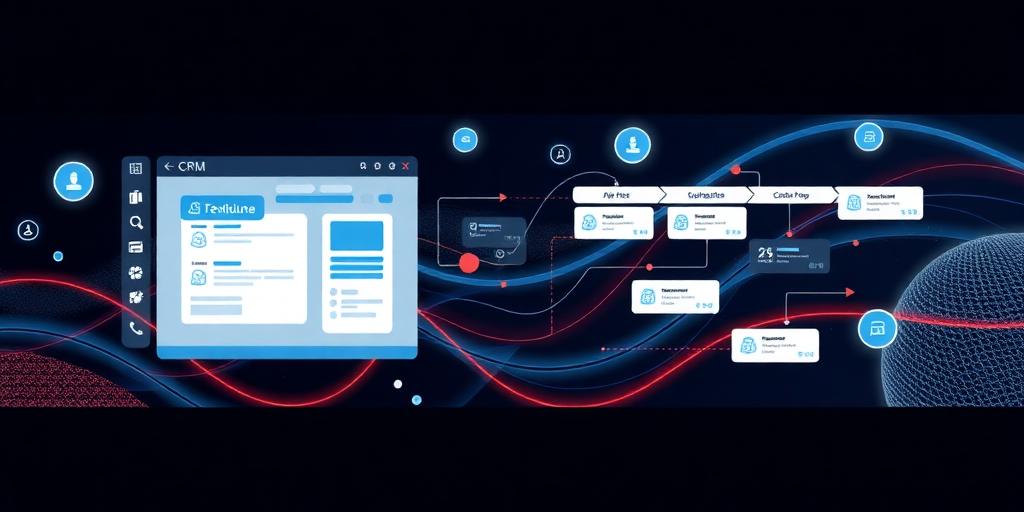Building an Automated Lead Nurturing System: A Comprehensive Guide
In today's competitive market, acquiring leads is only half the battle. Converting those leads into loyal customers requires a strategic and consistent approach. This is where an automated lead nurturing system becomes indispensable. By automating personalized interactions, businesses can guide potential customers through the sales funnel, building trust and ultimately driving conversions. This guide provides a comprehensive overview of how to build an effective automated lead nurturing system.
What is Lead Nurturing?
Lead nurturing is the process of building relationships with potential customers at every stage of the sales funnel. It involves providing valuable content, addressing their pain points, and guiding them toward a purchase decision. An effective lead nurturing strategy focuses on understanding the needs and behaviors of your leads and delivering relevant information at the right time.
Why Automate Lead Nurturing?
Automating your lead nurturing efforts offers numerous benefits:
- Scalability: Reach a large number of leads simultaneously without increasing manual workload.
- Personalization: Deliver targeted content based on lead behavior and demographics.
- Efficiency: Streamline the sales process and improve conversion rates.
- Consistency: Maintain a consistent brand voice and messaging across all interactions.
- Data-Driven Insights: Track and analyze lead behavior to optimize your nurturing strategy.
Step-by-Step Guide to Building an Automated Lead Nurturing System
Define Your Target Audience:
- Start by identifying your ideal customer profile (ICP). Understand their demographics, pain points, and purchasing behaviors.
- Segment your audience based on factors such as industry, job title, company size, and lead source. This will allow you to tailor your messaging and content effectively.
Map the Customer Journey:
- Outline the different stages of the customer journey, from initial awareness to purchase and beyond.
- Identify the key touchpoints and interactions that occur at each stage.
- Understand the information needs and challenges that leads face at each stage.
Create Compelling Content:
- Develop a content strategy that aligns with the customer journey and addresses the needs of your target audience.
- Create a variety of content formats, including blog posts, e-books, whitepapers, case studies, webinars, and videos.
- Ensure your content is valuable, informative, and engaging. Focus on providing solutions to your leads' pain points and building trust.
Choose the Right Automation Platform:
- Select a marketing automation platform that meets your business needs and budget. Popular options include HubSpot, Marketo, Pardot, and Mailchimp.
- Consider factors such as ease of use, integration capabilities, reporting features, and customer support.
- Ensure the platform allows you to segment your audience, create automated workflows, and track key metrics.
Design Automated Workflows:
- Create automated workflows that trigger based on specific lead behaviors or actions. Examples include:
- Welcome Email: Sent immediately after a lead subscribes to your email list.
- Content Download: Triggered when a lead downloads a piece of content.
- Website Visit: Activated when a lead visits a specific page on your website.
- Map out the sequence of emails, content offers, and other interactions that will occur within each workflow.
- Use conditional logic to personalize the experience based on lead behavior and demographics.
- Create automated workflows that trigger based on specific lead behaviors or actions. Examples include:
Personalize Your Messaging:
- Use personalization tokens to address leads by name and tailor your messaging to their specific interests and needs.
- Segment your audience based on behavior and demographics to deliver targeted content.
- Craft compelling subject lines and email copy that resonate with your target audience.
Implement Lead Scoring:
- Assign points to leads based on their behavior and demographics to identify the most qualified prospects.
- Track actions such as website visits, content downloads, email opens, and form submissions.
- Use lead scoring to prioritize your sales efforts and focus on leads who are most likely to convert.
Monitor and Optimize:
- Track key metrics such as email open rates, click-through rates, conversion rates, and lead generation costs.
- Analyze your data to identify areas for improvement and optimize your nurturing strategy.
- A/B test different subject lines, email copy, and content offers to determine what resonates best with your audience.
- Continuously refine your workflows and messaging based on performance data.
Best Practices for Automated Lead Nurturing
- Provide Value: Focus on delivering valuable content that addresses your leads' pain points and helps them solve their problems.
- Be Consistent: Maintain a consistent brand voice and messaging across all interactions.
- Personalize the Experience: Use personalization tokens and segmentation to deliver targeted content.
- Be Timely: Send emails and content offers at the right time based on lead behavior and demographics.
- Avoid Being Pushy: Focus on building relationships and providing value, rather than pushing for a sale.
- Offer Multiple Channels: Consider using multiple channels, such as email, social media, and chatbots, to engage with your leads.
Conclusion
Building an automated lead nurturing system is crucial for businesses looking to improve their conversion rates and drive revenue. By following the steps outlined in this guide, you can create a system that nurtures leads, builds relationships, and ultimately turns potential customers into loyal advocates for your brand. Embrace automation and data-driven insights to optimize your lead nurturing strategy and achieve sustainable growth.









